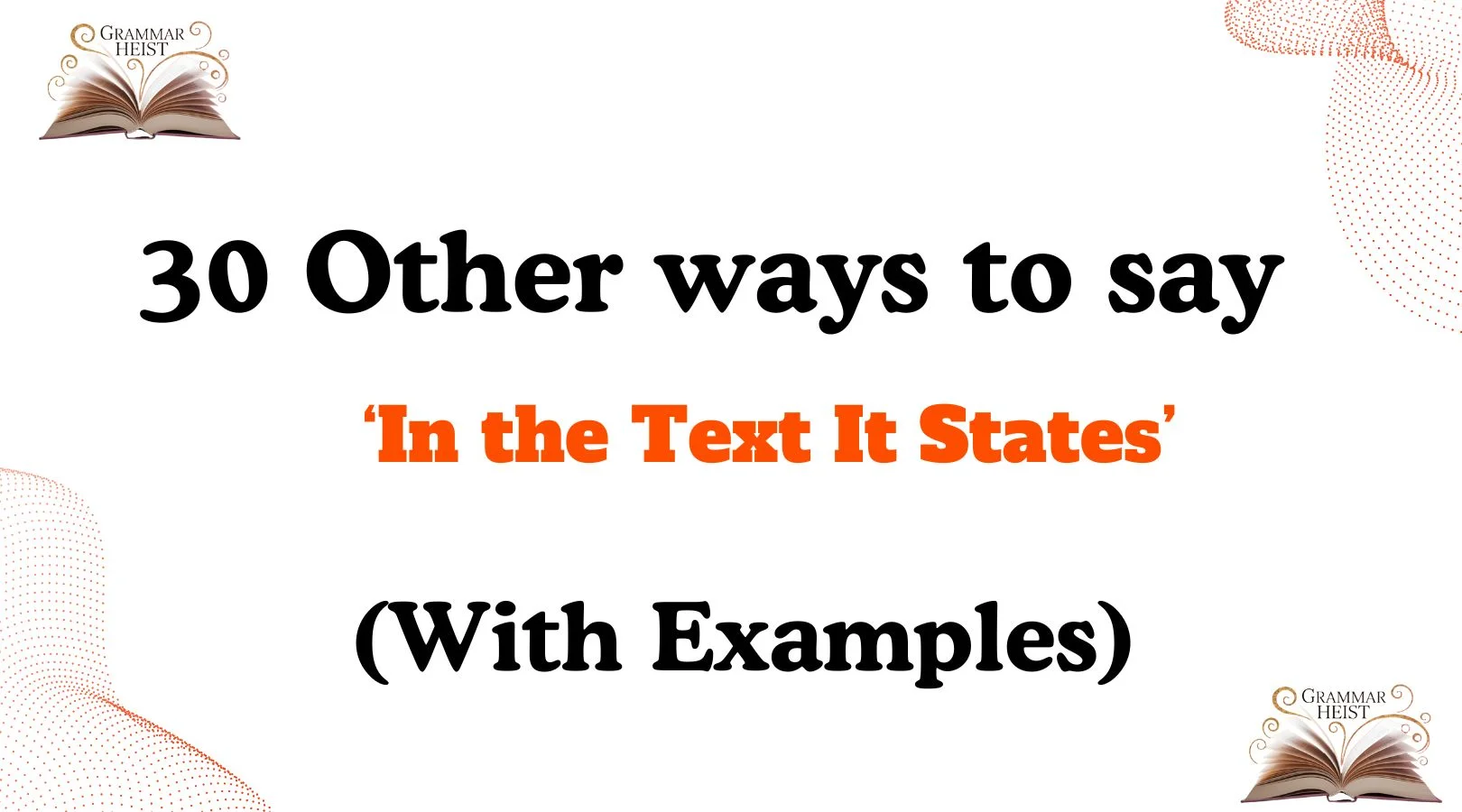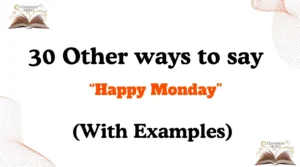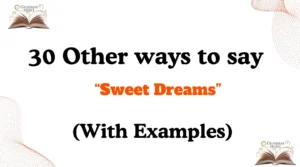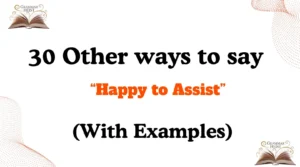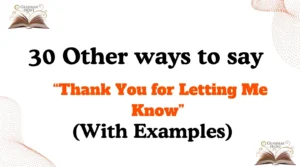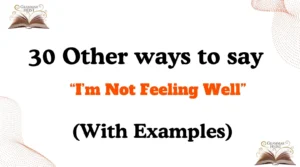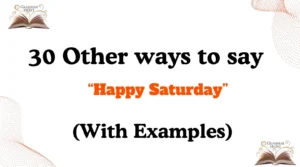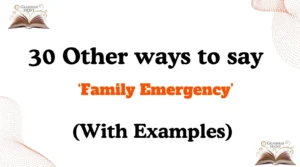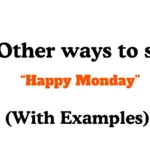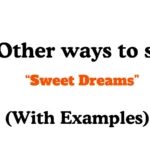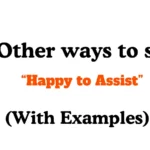Finding the right words to express ideas can make a big difference in how your writing feels. Instead of repeating the phrase “in the text it states,” you can use many thoughtful and professional alternatives that sound more natural and polished. These phrases help your writing feel clearer, more engaging, and more personal, especially when explaining or referencing information.
In this guide, you’ll discover 30 other ways to say “in the text it states,” each with examples, tone, and meaning — so you can sound confident and caring in every context.
What Does “In the Text It States” Mean?
The phrase “in the text it states” is used when referring to specific information, evidence, or ideas found in a written passage. It shows that you are pointing to details or facts directly mentioned in the text, often used in essays, reports, or academic writing.
Example:
In the text, it states that kindness can change people’s perspectives.
It’s a neutral and factual phrase, but sometimes it can sound too formal or repetitive, especially in casual or creative writing.
Is It Professional/Polite to Say “In the Text It States”?
Yes, it is professional — especially in academic or research contexts. However, it can sound a bit robotic or repetitive if used too often. In professional or conversational writing, using varied phrases keeps your tone engaging and shows language flexibility.
Pros or Cons of Using “In the Text It States”
Pros:
- Clear and direct
- Shows understanding of the source
- Works well in essays or reports
Cons:
- Can sound stiff or repetitive
- Lacks emotional connection
- Not ideal for conversational tone
In the Text It States Synonyms
- The author mentions that
- According to the text
- As stated in the passage
- The passage explains that
- The text reveals that
- As the text describes
- The writer points out that
- It is written that
- The article notes that
- The evidence shows that
- From the text, we learn that
- The reading shows that
- The paragraph suggests that
- The author implies that
- As highlighted in the text
- The statement indicates that
- Based on the passage
- The author expresses that
- The report states that
- The evidence suggests that
- The source indicates that
- The narrator explains that
- The section shows that
- The context suggests that
- From the author’s point of view
- The information suggests that
- The writer conveys that
- The author writes that
- As we read in the text
- The line states that
1. The author mentions that
Scenario: When you want to show what the writer said directly or indirectly.
Examples:
- The author mentions that friendship requires trust.
- The author mentions that courage often leads to growth.
- The author mentions that empathy can heal relationships.
Tone: Respectful and academic.
Explanation: This phrase is perfect when summarizing the writer’s main point without sounding too formal.
2. According to the text
Scenario: When referring to a statement or fact found in a written source.
Examples:
- According to the text, honesty builds stronger connections.
- According to the text, people learn through experience.
- According to the text, kindness is contagious.
Tone: Neutral and factual.
Explanation: Works well in essays and reports where accuracy matters.
3. As stated in the passage
Scenario: When referencing a direct quote or point from the reading.
Examples:
- As stated in the passage, patience is key to success.
- As stated in the passage, respect strengthens communication.
- As stated in the passage, love can overcome fear.
Tone: Formal and respectful.
Explanation: Ideal for academic or analytical writing.
4. The passage explains that
Scenario: When summarizing the main idea presented in a section of text.
Examples:
- The passage explains that teamwork encourages innovation.
- The passage explains that gratitude improves happiness.
- The passage explains that self-belief leads to progress.
Tone: Calm and explanatory.
Explanation: Sounds clear and smooth for essays or discussions.
5. The text reveals that
Scenario: When discussing something the text uncovers or brings to light.
Examples:
- The text reveals that confidence comes from self-awareness.
- The text reveals that forgiveness brings peace.
- The text reveals that challenges create resilience.
Tone: Thoughtful and reflective.
Explanation: Adds depth and curiosity to your writing.
6. As the text describes
Scenario: When describing actions, emotions, or settings.
Examples:
- As the text describes, the scene was filled with hope.
- As the text describes, love guided their decisions.
- As the text describes, unity brought strength.
Tone: Descriptive and gentle.
Explanation: Perfect for literature or storytelling analysis.
7. The writer points out that
Scenario: When you want to show the author’s opinion or argument.
Examples:
- The writer points out that change starts within.
- The writer points out that learning never truly ends.
- The writer points out that kindness is strength.
Tone: Professional yet approachable.
Explanation: Great for essays or reviews.
8. It is written that
Scenario: When referring to exact text content or quotations.
Examples:
- It is written that hope can lead to transformation.
- It is written that understanding reduces conflict.
- It is written that gratitude brings joy.
Tone: Classic and simple.
Explanation: Best for formal summaries or religious contexts.
9. The article notes that
Scenario: When analyzing information from an article or report.
Examples:
- The article notes that social bonds boost happiness.
- The article notes that teamwork builds trust.
- The article notes that reflection encourages growth.
Tone: Informative and polite.
Explanation: A clear and modern way to cite ideas.
10. The evidence shows that
Scenario: When emphasizing proof or data from a text.
Examples:
- The evidence shows that effort leads to success.
- The evidence shows that empathy enhances connection.
- The evidence shows that growth requires challenges.
Tone: Objective and logical.
Explanation: Ideal for academic, scientific, or research writing.
11. From the text, we learn that
Scenario: When reflecting on lessons or themes.
Examples:
- From the text, we learn that kindness matters most.
- From the text, we learn that resilience builds strength.
- From the text, we learn that love inspires courage.
Tone: Warm and reflective.
Explanation: Great for essays that explore moral or emotional lessons.
12. The reading shows that
Scenario: When explaining insights or interpretations.
Examples:
- The reading shows that honesty earns respect.
- The reading shows that forgiveness frees the heart.
- The reading shows that change brings opportunity.
Tone: Gentle and clear.
Explanation: Balanced tone for both essays and reflections.
13. The paragraph suggests that
Scenario: When interpreting an idea not directly stated.
Examples:
- The paragraph suggests that growth needs patience.
- The paragraph suggests that unity brings peace.
- The paragraph suggests that courage drives success.
Tone: Analytical and thoughtful.
Explanation: Helps show deeper understanding of the text.
14. The author implies that
Scenario: When discussing indirect or hidden meanings.
Examples:
- The author implies that hope guides human behavior.
- The author implies that fear limits progress.
- The author implies that compassion changes everything.
Tone: Insightful and observant.
Explanation: Perfect for literature analysis.
15. As highlighted in the text
Scenario: When emphasizing key points or main ideas.
Examples:
- As highlighted in the text, belief fuels achievement.
- As highlighted in the text, empathy strengthens unity.
- As highlighted in the text, time heals pain.
Tone: Professional and engaging.
Explanation: Suitable for academic essays or presentations.
16. The statement indicates that
Scenario: When referencing a clear idea or claim.
Examples:
- The statement indicates that teamwork creates results.
- The statement indicates that respect fosters understanding.
- The statement indicates that challenges bring wisdom.
Tone: Academic and precise.
Explanation: A strong choice for analytical writing.
Read More:30 Other Ways to Say ‘You Look Hot’ (With Examples)
17. Based on the passage
Scenario: When referring to details drawn from reading.
Examples:
- Based on the passage, effort leads to improvement.
- Based on the passage, honesty builds connection.
- Based on the passage, love overcomes fear.
Tone: Objective and thoughtful.
Explanation: Works beautifully in essays or exams.
18. The author expresses that
Scenario: When describing feelings or beliefs expressed by the writer.
Examples:
- The author expresses that gratitude heals hearts.
- The author expresses that kindness inspires others.
- The author expresses that hope renews strength.
Tone: Warm and emotional.
Explanation: Adds feeling and humanity to your interpretation.
19. The report states that
Scenario: When referring to facts in a report or article.
Examples:
- The report states that teamwork increases productivity.
- The report states that confidence improves results.
- The report states that leadership requires empathy.
Tone: Professional and formal.
Explanation: Suitable for workplace or academic writing.
20. The evidence suggests that
Scenario: When discussing logical or inferred conclusions.
Examples:
- The evidence suggests that balance leads to success.
- The evidence suggests that love inspires courage.
- The evidence suggests that rest improves focus.
Tone: Objective and reasoned.
Explanation: Great for research or argumentative writing.
21. The source indicates that
Scenario: When you’re referencing factual information or a credible document.
Examples:
- The source indicates that kindness improves communication.
- The source indicates that teamwork builds confidence.
- The source indicates that consistency leads to growth.
Tone: Formal and factual.
Explanation: This phrase works best when citing research or academic materials where evidence matters.
22. The narrator explains that
Scenario: When referring to the voice or storyteller in a narrative.
Examples:
- The narrator explains that hope guided the character’s journey.
- The narrator explains that love overcame fear.
- The narrator explains that truth brings peace.
Tone: Literary and expressive.
Explanation: Great for literature or story-based analysis where the storyteller’s view is essential.
23. The section shows that
Scenario: When pointing to a specific part of a text that reveals an idea.
Examples:
- The section shows that trust is built through honesty.
- The section shows that resilience leads to growth.
- The section shows that forgiveness restores peace.
Tone: Clear and analytical.
Explanation: Perfect for essays or study responses that discuss structure or paragraphs.
24. The context suggests that
Scenario: When interpreting meaning based on clues or tone in the writing.
Examples:
- The context suggests that the character feels regret.
- The context suggests that the author values empathy.
- The context suggests that perseverance brings reward.
Tone: Reflective and interpretive.
Explanation: Shows a deeper level of understanding and interpretation of text.
25. From the author’s point of view
Scenario: When summarizing the author’s personal beliefs or opinions.
Examples:
- From the author’s point of view, love conquers all.
- From the author’s point of view, kindness defines strength.
- From the author’s point of view, mistakes are steps toward growth.
Tone: Respectful and empathetic.
Explanation: Great for analytical essays and reflective discussions.
26. The information suggests that
Scenario: When drawing logical meaning from textual evidence.
Examples:
- The information suggests that unity brings stability.
- The information suggests that effort shapes success.
- The information suggests that empathy encourages teamwork.
Tone: Professional and logical.
Explanation: Suitable for academic or workplace contexts where clarity and evidence matter.
27. The writer conveys that
Scenario: When showing how an author communicates emotions or values.
Examples:
- The writer conveys that forgiveness is powerful.
- The writer conveys that patience brings strength.
- The writer conveys that courage leads to growth.
Tone: Warm and interpretive.
Explanation: Adds emotion and human connection to literary or analytical discussions.
28. The author writes that
Scenario: When quoting or summarizing the author’s words.
Examples:
- The author writes that love heals pain.
- The author writes that gratitude nurtures happiness.
- The author writes that self-belief drives success.
Tone: Neutral and formal.
Explanation: A simple and straightforward way to refer to direct text or quotes.
29. As we read in the text
Scenario: When discussing ideas or lessons while referencing the source.
Examples:
- As we read in the text, courage leads to change.
- As we read in the text, honesty builds relationships.
- As we read in the text, hope lights the way forward.
Tone: Friendly and inclusive.
Explanation: Perfect for class discussions, essays, or casual academic writing.
30. The line states that
Scenario: When referring to a specific sentence or phrase.
Examples:
- The line states that kindness is never wasted.
- The line states that challenges build character.
- The line states that time teaches patience.
Tone: Concise and direct.
Explanation: Works best when pointing to a specific textual detail or quote.
✨ Conclusion
Finding other ways to say “in the text it states” helps your writing sound more natural and thoughtful. These alternatives make your ideas clearer, smoother, and more personal, whether you’re writing an essay, report, or discussion. Using varied phrases shows that you understand the text deeply and care about how you communicate your message.

Mia Rose is a skilled language expert with a deep passion for helping individuals master the art of writing and communication. With years of experience in the field, Marie brings a thoughtful and tailored approach to grammar, style, and language improvement. Her goal is to empower others to express themselves with clarity, precision, and confidence in every written word.
